Lotus jackman: The dangerous world of the Formula 1 mechanic
- Published
The dangers facing Formula 1 pit-lane mechanics were brought into sharp focus by two alarming incidents during Sunday's Spanish Grand Prix.
McLaren's Fernando Alonso so nearly hit his front jackman when his brakes failed while entering his pit box, the quick feet of the mechanic averting a collision.
Lotus's front jackman was less fortunate a few laps later when Romain Grosjean was unable to stop safely in the slippery pit lane and clattered into his mechanic, pitching him into the air.
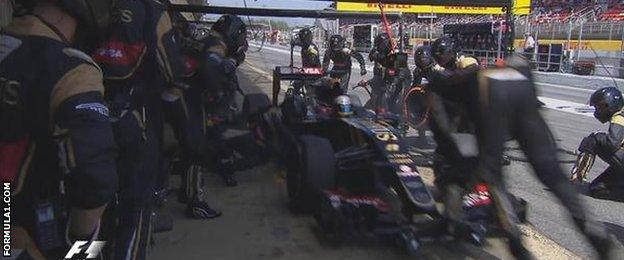
Lotus's Romain Grosjean struck two of his mechanics as he came in to the pits during the race
An icepack to the groin and a bandage on the arm had the mechanic patched up and smiling again, but all the same, it was a timely reminder that the F1 pit lane is one of sport's most dangerous environments.
Add into the mix the fact that these guys are normally jet-lagged, work long hours - 18-hour days are not unheard of - spend half their lives away from home, and it's fair to brand the life of an F1 mechanic a hard one.
They deserve our respect, and here's a few more reasons why:
Massa drives off with the fuel hose
When Nelson Piquet Jnr purposely crashed his Renault, external on lap 14 of the 2008 Singapore Grand Prix, the Brazilian was lucky his 'crash' did not result in a truly serious pit-lane incident.
Rushing to get race leader Felipe Massa back on track during the safety car period that followed, Ferrari's electronic pit-release system prematurely turned green, causing him to pull away with the refuelling hose still attached.
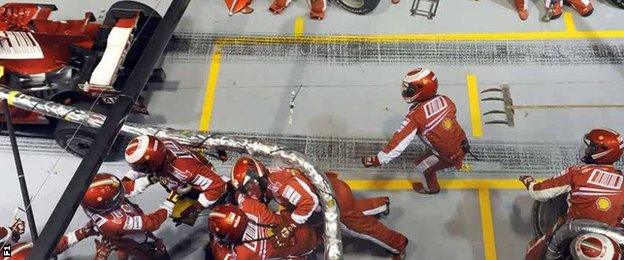
Massa accerates away with the fuel hose attached, ripping it from the tank
Massa knocked over a mechanic and tore the refuelling hose away from the equipment, which stayed clamped to the side of the car, before he pulled over at the end of the pit lane.
A handful of Ferrari mechanics sprinted to release the hose but the damage was done. An almost certain victory and 10 points were lost. Come season's end Massa would lose the title by one point.

Felipe Massa's mechanics battle to remove the fuel hose from his car at the end of the pit lane

How BBC Sport's live text team described the incident in 2008
Verstappen's Hockenheim fireball
Perhaps the most famous of all the sport's pit-lane incidents occurred 21 years ago at Hockenheim.
On lap 15 of the 1994 German Grand Prix, the Benetton of Jos Verstappen came in for a routine pit stop only to suffer a catastrophic failure of the refuelling hose, spraying car, driver and mechanics with fuel that quickly ignited.
The fire was extinguished after only a few seconds but not before Verstappen - father of Toro Rosso driver Max - and a handful of mechanics suffered minor burns. It later emerged that a 'junior member' of the Benetton team had removed a filter from the hose, causing the conflagration.
'I felt my arms stretch, snap and pop back'
The Benetton team had another scare in 1995 when Steve Matchett was very nearly dragged down the pit lane by Johnny Herbert when the rear jack became lodged underneath the car as the Briton accelerated out of his pit box at the Spanish Grand Prix.

Matchett, right, is briefly dragged forward by the accelerating Herbert
Matchett later went on to become a broadcaster and author and described the incident in his 1999 book 'The Mechanic's Tale':
"The next thing I remember was a terrifically violent lunge from the jack handles as Herbert released the full might of the 800-horsepower engine. Within the space of one second the car was doing 40 miles an hour. Fortunately I managed to get free, but the jack travelled the entire length of the pit lane before finally disengaging itself from the car.
"I felt both my arms stretch, snap and pop back again; nothing broken, thank God, but two sharp spears of pain like nothing I'd ever felt before. It was a relief when they finally went numb."
Luckett struck by car on starting grid
If you want to fully appreciate the strides taken in F1 safety over the years, you could do worse than watch the utterly shambolic start to the 1981 Belgian Grand Prix at Zolder.
With just seconds to go before the race start, the cars, hopelessly out of sequence, were still forming up on the grid. Amid the confused scenes, the Arrows of Riccardo Patrese stalled and his chief mechanic, Dave Luckett, went to his aid - just as race was started.
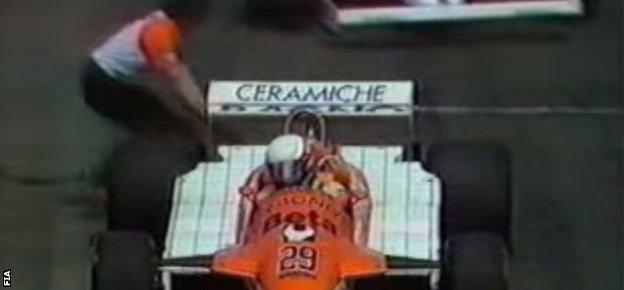
Dave Luckett comes to Patrese's aid - just as the race is started amid chaotic scenes at Zolder
Luckett ducked behind the rear wing of Patrese's car and was avoided by half a dozen cars, but was struck by the second Arrows of the unsighted Siegfried Stohr, leaving him with a badly broken leg and arm and a hand injury.
The incident came just two days after Osella mechanic Giovanni Amadeo was killed when he fell off the pit wall during practice and was struck by the Williams of Carlos Reutemann.
Schumacher hits Stepney in Barcelona
During the days of in-race refuelling there were countless incidents involving drivers setting off while the fuel hose - and refuelling man - was attached to the car.
One of the most famous involved Ferrari's Michael Schumacher in Spain in 2000, when the German was wrongly given the signal to leave the pit box and struck chief mechanic Nigel Stepney, who suffered a broken ankle.
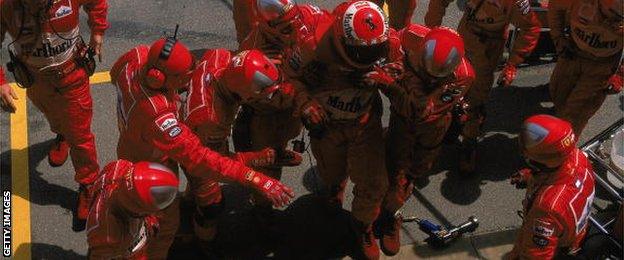
Stepney is helped away by his Ferrari team-mates
The final chapter of F1's 'Black Weekend'
The 1994 San Marino Grand Prix weekend will forever be remembered for the sad losses of Ayrton Senna and Roland Ratzenberger, a twin tragedy that paved the way for a raft of safety improvements in the sport.
Yet one of the key safety revisions to come out of that weekend - a limit on the speed cars could travel in the pit lane - had nothing to do with those terrible crashes.
That change came about due to an incident involving Michele Alboreto, whose Minardi shed a rear wheel as he accelerated away after a pit stop on lap 48, with four mechanics - two from Lotus and two from Ferrari - injured in the incident.
Andrew Benson, Chief F1 Writer |
|---|
"The Spanish GP provided further evidence of a truth well known within F1 - in many ways the mechanics are the unsung heroes of the sport. Fortunately, both men involved in Sunday's incidents were unhurt, as is usually the case in such incidents. But the risks are always there. |
"Whether it be changing tyres in less than three seconds, when a mistake could cost their driver positions on track, or working long into the night to fix complicated problems, F1 could not exist without them." |
- Published10 May 2015
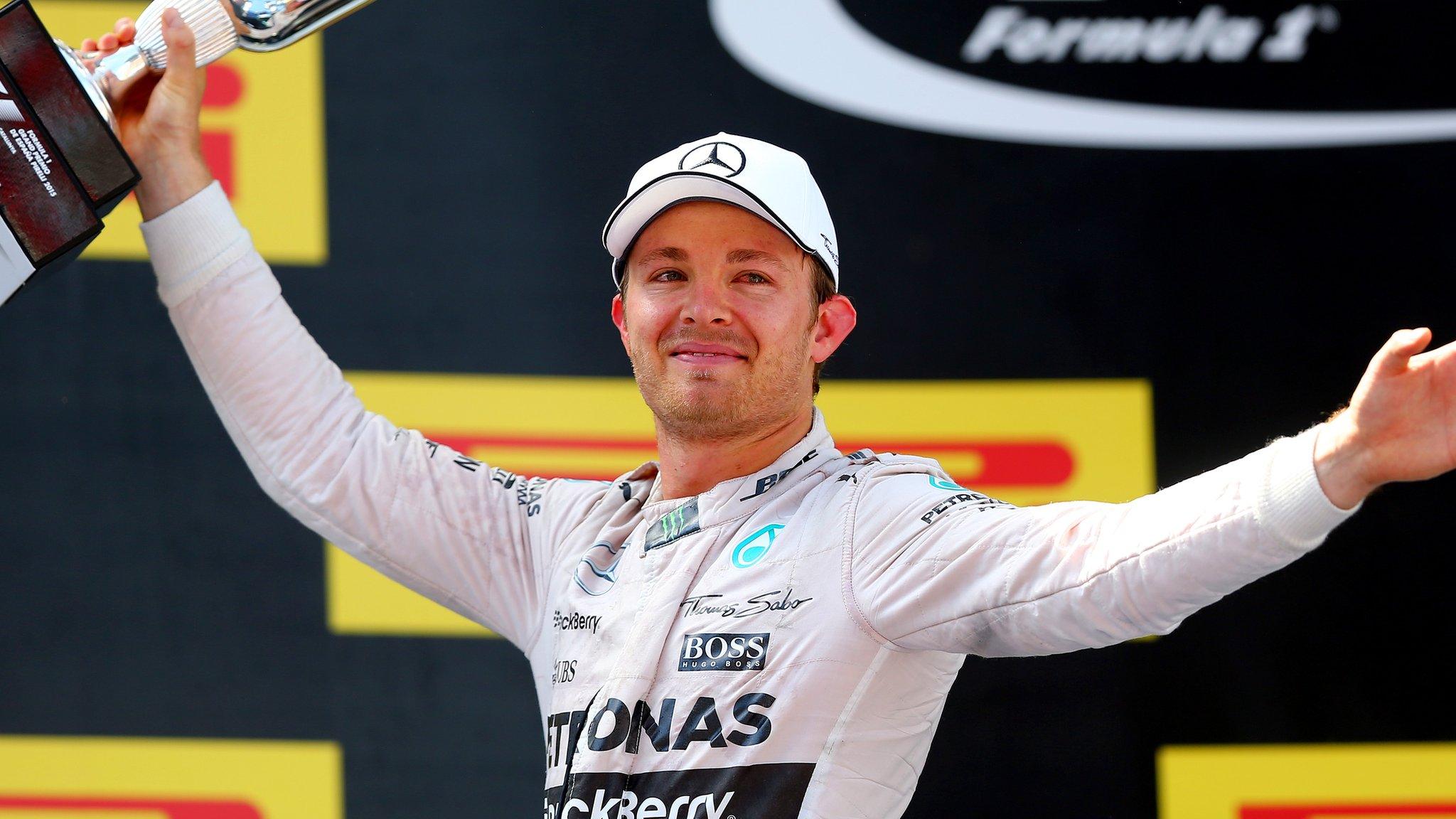
- Published10 May 2015

- Published10 May 2015
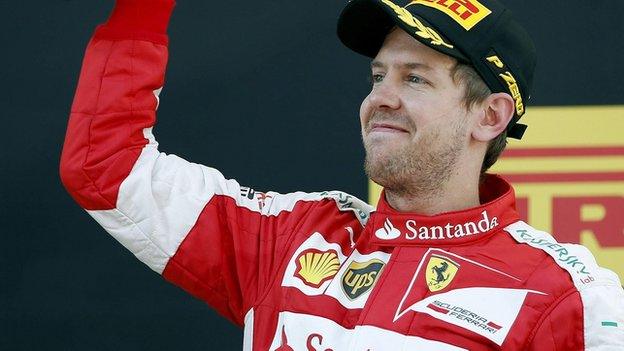
- Published3 May 2015
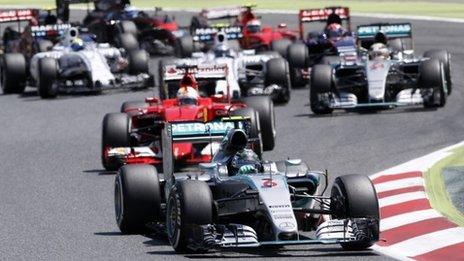
- Published18 December 2015

- Published2 November 2018

- Published26 February 2019
